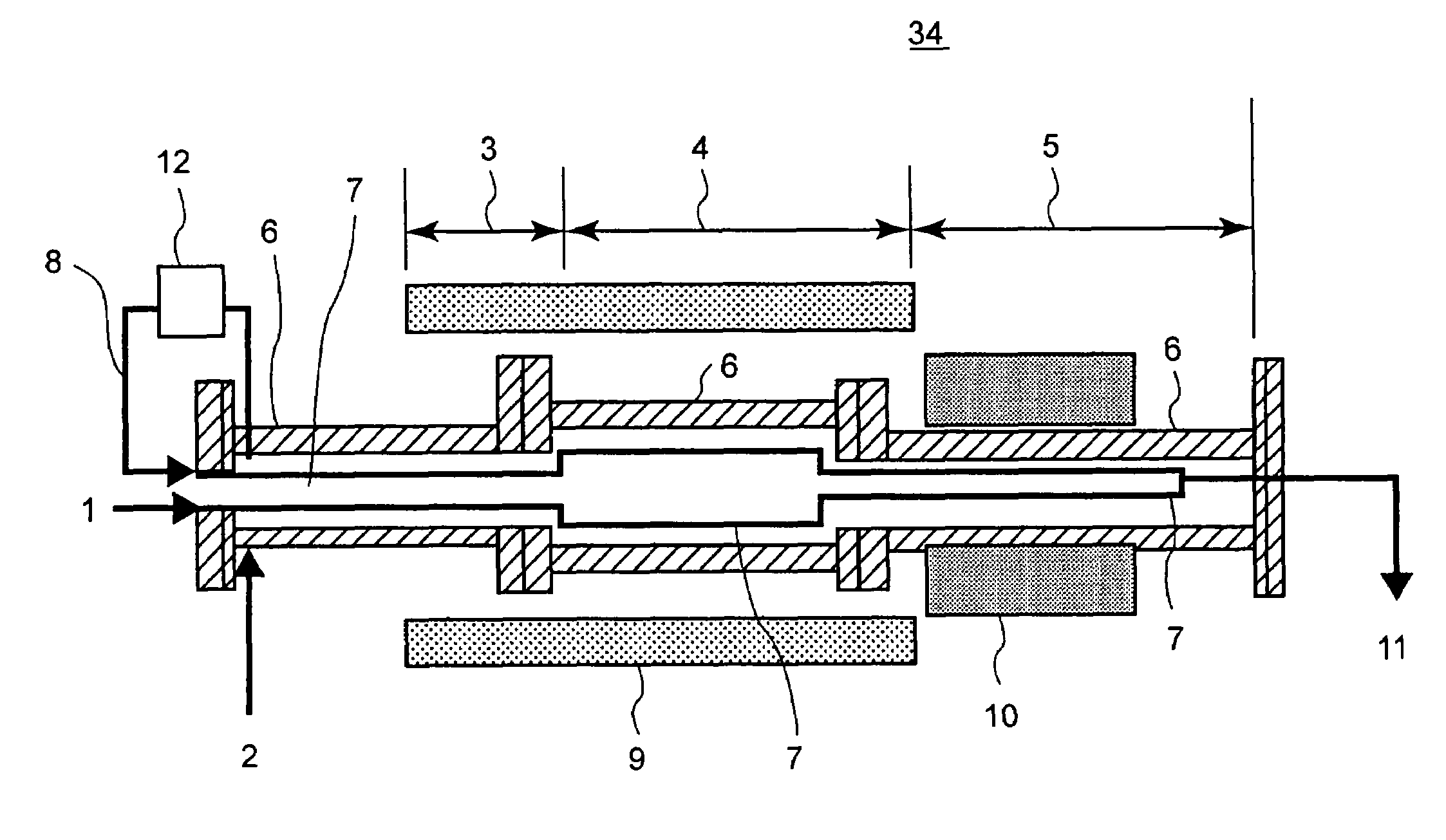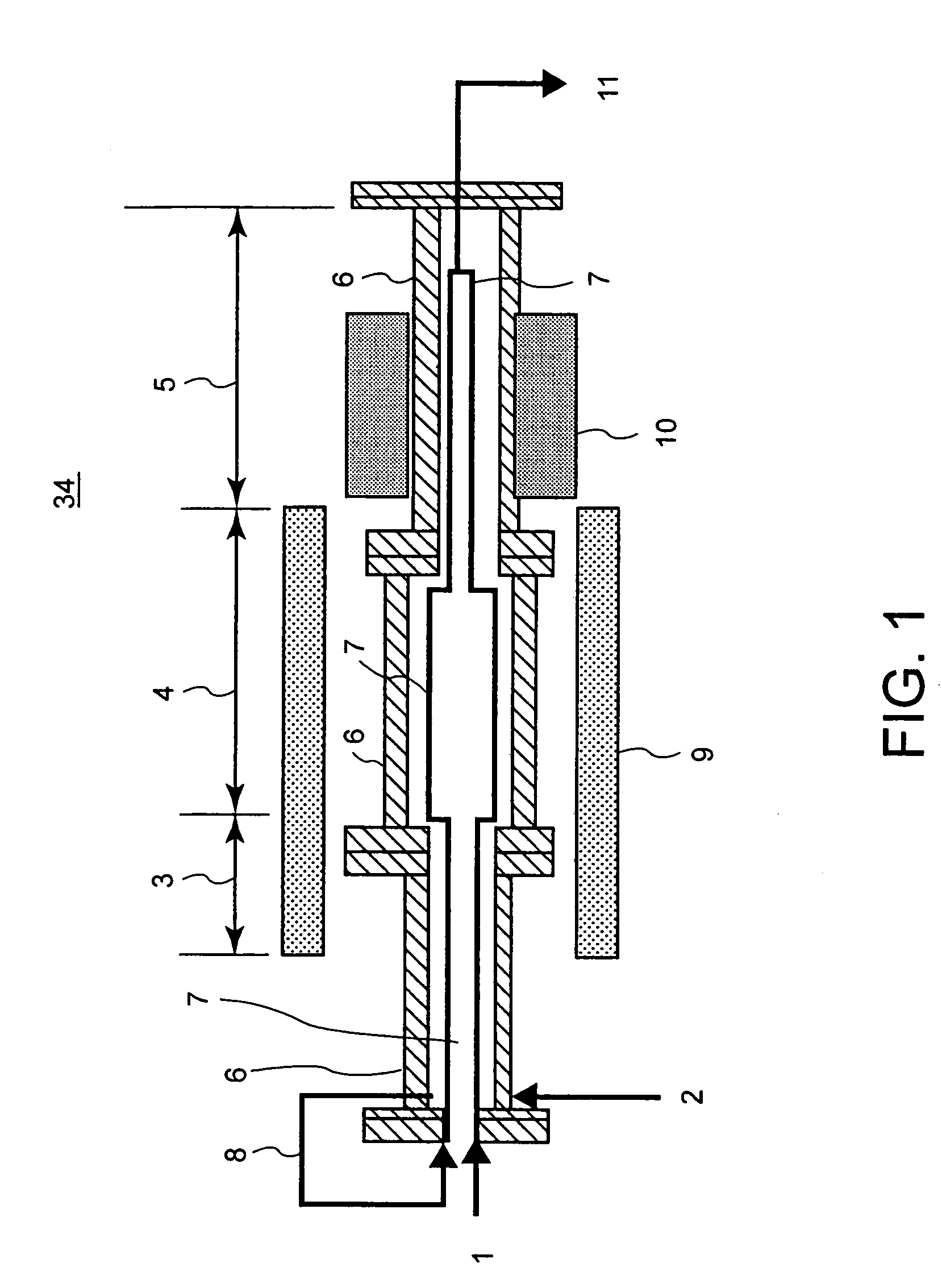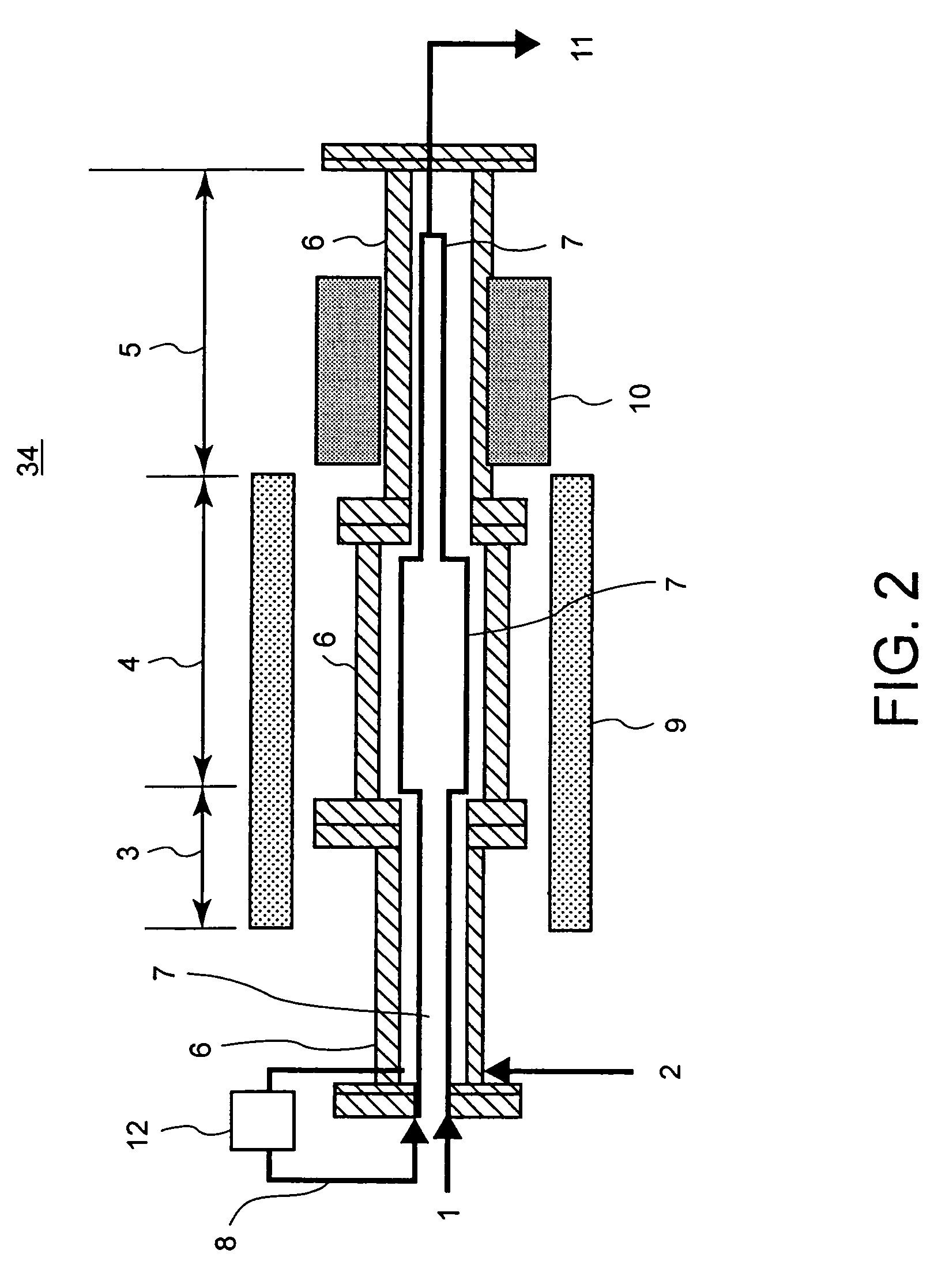Treatment apparatus and treatment method for organic waste
a treatment apparatus and organic waste technology, applied in the direction of physical/chemical process catalysts, separation processes, supercritical conditions, etc., can solve the problems of large-scale apparatus, large-scale treatment of organic waste, and large-scale so as to achieve safe and continuous decomposition of organic waste
- Summary
- Abstract
- Description
- Claims
- Application Information
AI Technical Summary
Benefits of technology
Problems solved by technology
Method used
Image
Examples
embodiment 1
[0034]The first embodiment of the present invention will be explained by referring to FIGS. 1, 2 and 3.
[0035]FIG. 1 shows a cross sectional view of a reaction vessel 34 installed in a treatment apparatus for organic waste according to this embodiment. Namely, in the treatment apparatus for continuously feeding and continuously pulling out a fluid to be treated including waste 1 and water or hydrogen peroxide water 2 to and from the reaction vessel 34 held in an atmosphere above the critical point of water, the reaction vessel 34 is a double vessel composed of an external vessel 6 and an internal vessel 7. The internal vessel 7 and the external vessel 6 are interconnected via an interconnection pipe 8 installed outside the external vessel 6, and thereby the internal pressure of the internal vessel 7 is practically equal to the internal pressure of the external vessel 6.
[0036]In FIG. 1, waste 1 is fed to the internal vessel 7 of the reaction vessel 34, and water or hydrogen peroxide w...
embodiment 2
[0047]Next, a treatment apparatus for organic waste according to a second embodiment of this invention will be explained. In the reaction vessel 34 shown in FIG. 1 or 2, when the internal vessel 7 is made of titanium, tantalum, or titanium palladium, organic waste which generates a corrosive acid such as sulfuric acid by decomposition can be treated.
[0048]FIG. 4 shows measured results of the corrosion rate of titanium (Ti), tantalum (Ta), and titanium palladium (Ti—Pd) along with stainless steel 316L, Inconel 625, and Hastelloy C-276 for comparison. Test specimens are dipped in a case (a) 2% hydrogen peroxide water +2% sulfuric acid or in a case (b) 2% hydrogen peroxide water +2% hydrochloric acid for five hours, and weight change amounts are measured. The temperature and pressure conditions are 400° C. and 28.5 MPa in two cases (a) and (b). The test results show that stainless steel 316L, Inconel 625, and Hastelloy C-276 greatly reduce in weight and corrode remarkably. While titani...
embodiment 3
[0052]Next, a treatment apparatus for organic waste according to a third embodiment of the present invention will be explained by referring to FIGS. 5, 6, and 7. FIG. 5 is a cross sectional view of the entrance of the reaction vessel 34 according to this embodiment. The entrance of the reaction vessel 34 is structured so as to fix the internal vessel 7 to the external vessel 6. With a fixed part 13 as a start point, the internal vessel 7 can freely move right and left in correspondence with up and down of the temperature. For a feed pipe 14 of the waste 1, at the entrance of the reaction vessel 34, a pipe 15 (for example, stainless steel) intensive at high temperature is used and in the internal vessel 7, a corrosion-resistant pipe (for example, titanium) is used.
[0053]The waste 1 is introduced from the feed pipe 14 into the internal vessel 7, then is heated in the heating zone 3, and reacts to water or the hydrogen peroxide water 2 in the reaction zone 4. On the other hand, water o...
PUM
| Property | Measurement | Unit |
|---|---|---|
| critical point | aaaaa | aaaaa |
| pressure | aaaaa | aaaaa |
| temperature | aaaaa | aaaaa |
Abstract
Description
Claims
Application Information
 Login to View More
Login to View More - R&D
- Intellectual Property
- Life Sciences
- Materials
- Tech Scout
- Unparalleled Data Quality
- Higher Quality Content
- 60% Fewer Hallucinations
Browse by: Latest US Patents, China's latest patents, Technical Efficacy Thesaurus, Application Domain, Technology Topic, Popular Technical Reports.
© 2025 PatSnap. All rights reserved.Legal|Privacy policy|Modern Slavery Act Transparency Statement|Sitemap|About US| Contact US: help@patsnap.com



